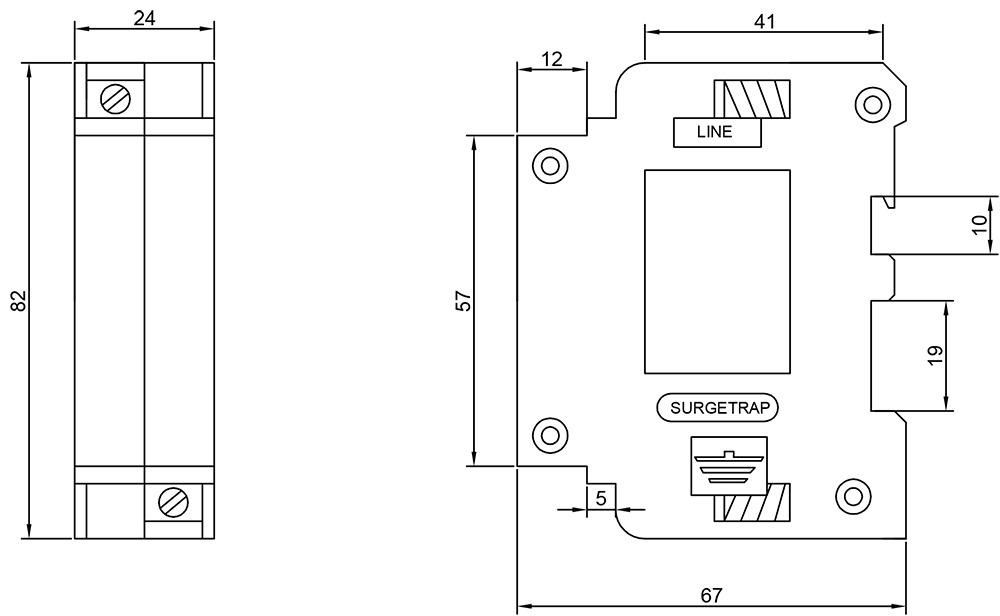SPDs protect equipment by limiting the surge voltage to which the equipment is exposed. At the same time, they divert dangerous surge currents, e.g. those due to direct lightning strikes, to earth and away from sensitive equipment. In simple terms, an SPD may be seen as a switch between mains and earth. Normally, the switch is open and the SPD does not affect the operation of the equipment in any way. Only when a sufficiently high surge appears across its terminals does the switch close and divert the surge away from the equipment.
SAL indoor arrestor (SPD) can release lightning energy or the energy from operational overvoltages in the power system, protecting electrical equipment from transient overvoltage hazards. It can also interrupt the follow current, preventing system grounding short circuits. Surge arresters are typically connected between live wires and the ground, in parallel with the protected equipment. When the overvoltage reaches a specified operating voltage, the surge arrester immediately activates, allowing charge to flow through it, limiting the amplitude of the overvoltage and protecting the insulation of the equipment; after the voltage returns to normal, the surge arrester quickly returns to its original state, ensuring normal power supply to the system.
Detail Technical Data
Type
SAL Indoor Arrestor (SPD)
Maximum Continuous Operating Voltage (Uc)
220VAC-240VAC
Nominal Discharge Current (Inom) (In)
30kA
Maximum Discharge Current (Imax)
60kA
Short Circuit Withstand
2.5kV
Voltage Protection level (Peak) (Up)
1.5kV
Operating Temperature Range
-40 °C to +85 °C
Mounting Options
Dual mounting (DIN & Mini), DIN Rail
Weight
160g
Humidity
35 to 85% relative
SPD Class
Class II
Dimensions
